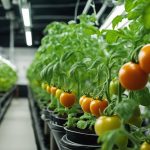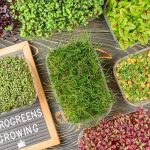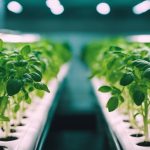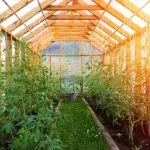Growing tomatoes using hydroponics can be a delightful venture as you get to enjoy fresh, juicy tomatoes all year round. The best tomato varieties for hydroponics are ones that not only thrive in a soilless environment but also resist common diseases and pests. When you choose a variety, consider factors like flavor, size, and the type of hydroponic system you’re using.
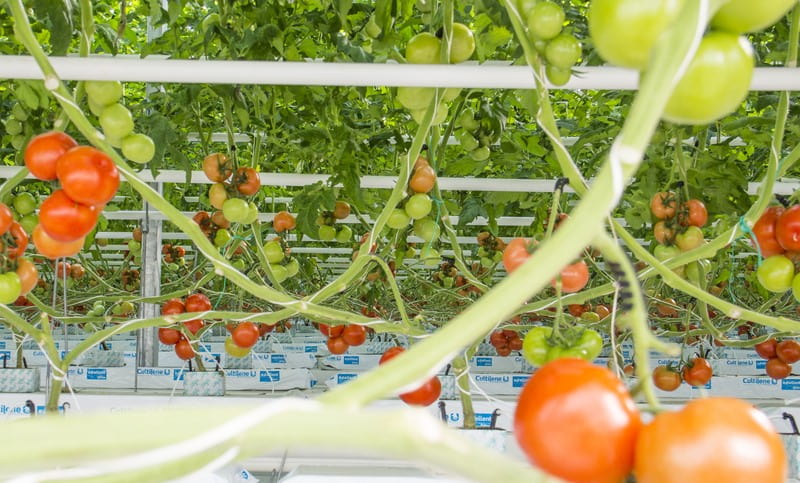
Selecting the right variety can significantly increase your success with hydroponic tomatoes. Indeterminate types, which continually grow and produce fruit, are often preferred for their extended harvesting period. Varieties like ‘Cherry Bomb’, ‘Sun Gold’, and ‘Green Zebra’ have shown to perform exceptionally well in hydroponic setups due to their robust growth and flavorful produce. It’s essential to ensure that your choice is compatible with the specific requirements of your hydroponic system to ensure a bountiful and healthy crop.
Choosing the Right Tomato Varieties
When setting up a hydroponic garden, selecting the right tomato varieties can make a significant difference in flavor and yield. Consider factors like growth habits, fruit characteristics, and how much space you have available for your hydroponic system.
Cherry Tomatoes
Cherry tomatoes are a top choice for their size and concentrated flavor. Varieties like ‘Sun Gold’ offer bountiful clusters of sweet, golden fruits that mature quickly. The hydroponic cherry tomato yield per plant is typically high, making them a productive addition to your setup.
Beefsteak Tomatoes
For those sizeable, juicy tomatoes perfect for sandwiches, hydroponic beefsteak tomatoes are ideal. ‘Celebrity’ is a variety known for its large, flavorful fruits and disease resistance, suitable for hydroponic environments.
Roma Tomatoes
Roma tomatoes, valued for their meaty texture and lower water content, are excellent for sauces and canning. These tomatoes thrive in hydroponic systems, where you can control the growing conditions to optimize their rich flavor.
Heirloom Varieties
Hydroponic heirloom tomatoes, like ‘Cherokee Purple’, give you the chance to grow unique shapes and flavors not commonly found in grocery stores. Heirloom varieties tend to require more attentive care but reward you with exceptional taste and variety.
Dwarf Tomato Varieties
If you’re limited on space, consider dwarf tomato varieties. These small plants are determinate tomatoes, meaning they grow to a fixed size and produce a concentrated harvest. They’re well-suited to hydroponic systems where space is at a premium.
Factors to Consider When Selecting the Best Tomato Varieties for Hydroponics
When you’re choosing the best tomato varieties for indoor hydroponics, there are several critical factors to take into account:
Growth Habit: Opt for indeterminate tomato plants that continue to grow and produce fruit throughout the growing season. Their vining nature makes them well-suited for vertical spaces in greenhouses or indoor environments. However, if space is limited, determinate varieties may be a better option.
Size, Type, and Yield: Think about what you want from your hydroponic tomato seed. Cherry tomatoes like ‘Sun Gold’ or ‘Sweet Million’ are small, prolific, and easy to grow, while larger varieties like ‘Beefsteak’ or ‘Roma’ require more space and support but can provide substantial harvests. Some varieties are known for their high yields, which can be an important factor in commercial hydroponic operations. When growing tomatoes in water, the type and size of container will play an important role too.
Flavor: Consider the taste profiles and end use of the tomatoes (snacking, salads, cooking, canning, etc.), as some tomatoes offer a sweeter taste, while others are more acidic. Choose varieties that will produce the appropriate size and type of fruit for your needs.
Disease Resistance: To minimize the risk of ailments in a controlled environment, select varieties that are robust against common tomato diseases, such as fusarium wilt, verticillium wilt, and tomato mosaic virus. You’ll ensure a healthier growth and potentially greater yields.
Important Environment Factors for All Tomato Varieties
Lighting: Your hydroponic tomatoes will need adequate light to thrive. If you’re growing tomatoes year-round, be aware of the changes in natural light intensity and duration with the seasons. You may need to adjust your artificial lighting to compensate for less natural sunlight in the winter months. LED grow lights are a popular choice when direct sunlight isn’t sufficient, as they can provide a consistent and full spectrum of light needed for optimal growth.
Temperature and Humidity: Keeping your greenhouse or indoor setup within the ideal temperature range (65-85°F) and maintaining proper humidity levels will support plant health and productivity.
pH and Nutrient Solutions: Maintaining the pH level of your nutrient solution between 5.5 and 6.5 helps to prevent nutrient deficiencies. Regularly monitor and adjust the nutrient concentrations to maintain vigorous growth.
Related: How long does it take to grow tomatoes hydroponically? Find out in our complete guide on growing hydroponic tomatoes.
How to Support Hydroponic Tomatoes and Prevent the Plants from Wilting
Proper support and pruning techniques are essential in preventing your hydroponic tomatoes from wilting and ensuring a healthy yield.
Staking and Training
To begin, select a sturdy support system, as tomato plants can become quite heavy with fruit. For vining or indeterminate tomato varieties, which grow continuously throughout the season, use tall stakes or cages to support their height. You can gently tie the main stem to the stakes using soft ties to prevent damage to the plant. Net pots and rockwool cubes are great for starting your tomatoes, but as the plants mature, moving them to a system where they can be adequately supported is crucial. Training your indeterminate tomatoes involves directing the growth upwards and ensuring that each plant has enough space and shade to prevent stress from excessive heat.
Pruning for Health and Yield
Pruning is a necessary step to maintain plant health and increase yield, especially for indeterminate tomatoes, as they can grow quite large and unruly. By removing unnecessary leaves and non-fruiting branches, you increase air circulation and light exposure to the plant, which is vital for its health and the ripening of the tomatoes. On the other hand, determinate tomatoes, which grow to a set size and produce a single harvest, typically require less extensive pruning. Regularly check for any yellowing or diseased leaves and remove them promptly to prevent the spread of any potential issues that could lead to wilting.
Frequently Asked Questions
In this section, we’ll answer some common queries to help you manage your hydroponic tomato garden more effectively.

